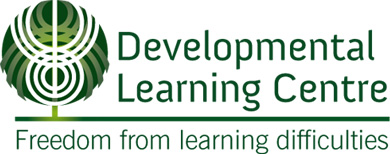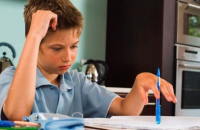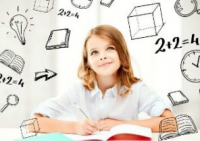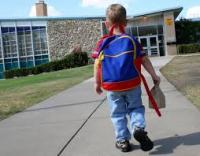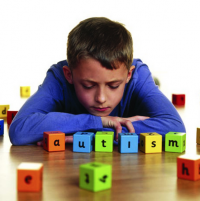Is your child easily distracted?
Does your child have difficulty staying focussed and on task? At the Developmental Learning Centre, we offer a FREE Online Learning Difficulties Symptom Test and we found that of all the issues listed, the one ticked by parents more often than any other was “Easily distracted, short attention span”. It does appear that many students today are finding it much harder to concentrate than previous in generations and at the far end of this spectrum we have the explosion of children being diagnosed with disorders such as ADHD and ADD and put on medication to treat this.
Check out the blog below from our good friends at Integrated Listening Systems summaring some terrific findings by neuroscientists about the best ways to learn.
1) To prepare for a test, take a test!
At the Developmental Learning Centre we see many parents with children who are experiencing difficulties related to balance, gross and fine motor difficulties and learning. As a learning difficulties therapist, I am always interested in understanding the child’s history and if their natural movement was restricted as a baby. Restricting natural movement can inhibit the formation of pathways in the brain, which will later be used for learning. In this blog, I describe the importance of movement in a baby, how to encourage movement in the early years and how to give your child a second chance torepeat the early childhood movement patterns if they missed out first time round.
What is Dyspraxia?
To understand what dyspraxia is we must first learn what “praxia” is. Praxia is from the Greek word “praxis” which means movement process. Praxis is the process by which we figure out how to plan our actions and move our bodies easefully towards achieving a goal.
Praxis enables the young child (after much trial and error) to learn how to carry out gross and fine motor movements such as crawling, walking, running, hopping, jumping and skipping. Also, it enables the child to learn how to do many more complex tasks, such as how to dress herself, tie her own shoe laces, manage a knife and fork at the table without making a huge mess, and swim overarm.
Why are omega 3 fatty acids important for learning and development?
At the Developmental Learning Centre, parents often ask me what they can do at home to help their children with learning difficulties. Because we are engaged in a process of fixing the underlying causes of these difficulties, many of these children are enrolled in the Developmental Movement Therapy we offer at the centre. This programme removes immaturities and “roadblocks” on the neurological pathways children need for learning. So the first thing parents can do is to commit to doing our home exercise programme every day.
As a parent your first steps are to ensure that your child’s most obvious learning equipment is in good order and functioning well. Parents should submit their children to what is effectively a learning “warrant of fitness” before they enter school. Initially this should cover the following:
1. Good Hearing
Get your child’s hearing checked by a qualified audiologist. This will cost approximately $65. Ask for an auditory processing assessment as well if available. If you can’t afford to go privately ask your GP for a referral to the hospital audiologist. Your audiologist will be able to tell you if any follow up is needed. Sometimes hearing is compromised by congestion and fluid accumulation in the middle ear or wax in the outer ear canal.
In previous articles I have discussed some of the “equipment” your child needs to have in good working order for learning at school to be easeful and enjoyable. Vision and hearing, good fuel and hydration are obvious to most of us. However, many parents and teachers do not realise the importance of good balance to the process of thinking. In this blog, I will explain why good balance is key to successful learning and how to complete a simple test to understand if your child is experiencing balancing issues.
Why is balance so important to successful learning?
Balance is the ability of the individual to maintain equilibrium, to sit erect in an upright posture, to be able to stand on two feet without swaying, to be able to walk without falling over, and to be able to maintain an upright posture even in the dark.
The sense of balance develops in response to the pull of gravity. Gravity affects us all from the moment of conception until the end of life itself. Balance is, in fact, one the first of the senses to develop and is the foundation for many capacities we need to function well in life.
Good balance enables you and your child to concentrate, sit still and listen when required, to think clearly, to succeed at reading, spelling and mathematics and to develop skill in sporting activities.
How Do We Maintain Our Balance?
What medication is generally prescribed for ADHD and how does it work?
If your child has gone through a full ADHD assessment process with a paediatrician, and received a formal diagnosis it is most likely that a trial of Ritalin, Concerta or other stimulant medication will be offered. In simple terms, these drugs appear to improve the effectiveness of dopamine which is one of the main neuro transmitters in the brain and is related to feelings of reward and happiness. Ritalin appears to increase the flow of information to the attention centres of the brain, stimulating attention.
If your child’s symptoms are severe you will most likely see a dramatic improvement in school performance once they have adapted to the medication and are on the correct dosage.
What are the side affects of ADHD medication?
There will also be side effects from this medication which will need to be taken into account. These may include loss of appetite, difficulty going to sleep at night, jitteriness, lethargy and inactivity. A rebound effect immediately after the daily dose has worn off often occurs, when the child’s symptoms are even more severe than usual for a brief period of time. Most children also do not take the medication after school or on the weekends, so that symptoms experienced at home remain the same.
The long term effects of these stimulant drugs on the brain are also not known.
What is Autism?
Autism (or Autistic Spectrum Disorder) covers a range of developmental disorders characterised by widespread abnormalities of social interactions and communication, severely restricted interests and highly repetitive behaviour. This includes individuals who are non- communicative or mute at one end of the spectrum and those who are gifted or with genius IQ with mild autism at the other.
How do I know if my child has Autism?
An Autisic child will demonstrate some of the following characteristics. It is important to note that many of the symptoms below are shared with other categories of learning difficulties and may indicate common, underlying developmental or auditory processing delays. Why not take our FREE online test to understand if your child is displaying common symptoms of learning or behavioural difficulties and to understand if your child would benefit from our natural and holistic therapies.
Your child will have shown significant a delay in the development of language from an early age, with delay in the emergence of the following milestones:
What does Learning Difficulties expert Rosemary Murphy have to say?
Rosemary Murphy opened the evening with the burning question on everyone’s minds, ‘What can be done to help my child struggling with learning difficulties?’
She explained the need to look beyond the symptoms to the underlying causes, using the analogy of a learning table – for the table to stand strong, the four table legs underneath must be fully upright. When applying this to learning difficulties the 4 pillars are: spatial orientation; body geography; neurological maturity and sensory processing. Each pillar plays vital role in a child’s ability to learn and we must look at the whole picture to ensure a lasting impact. Rosemary then talked through each learning faculty, explaining its role in the learning process, how to test and the treatments available including Auditory Retraining Therapy or Developmental Movement Therapy.
A ground breaking, educational research study being carried out by Rosemary Murphy, Director of The Developmental Learning Centre has yielded its first results. The study’s aim was to explore the effectiveness of sound therapy on children with learning difficulties. In particular Mrs Murphy was interested in exploring the effect of sound therapy on literacy as the most significant learning category.
Mrs Murphy began the study last year with the support and cooperation of Greenpark School, Tauranga. 24 children were selected by teachers because of their learning difficulties, which included persistent difficulties in reading, writing and spelling, as well as some behavioural issues related to poor listening such as restlessness, distractibility, dreaminess, forgetting instructions, frequently requiring repetition, poor short term memory and difficulty keeping up in class.
For further information or to make an appointment contact us.
Extra Lesson™
Research into the effects of Extra Lesson™ on 15 students with learning difficulties showed that students improved on average by 22 months in reading accuracy and 23 months in reading comprehension after 7 months in the program. (M.Ed Thesis, M. Judd 1997.) ADD and ADHD diagnosed Extra Lesson™ students have shown decreases in behaviours such as inattention, hyperactivity and impulsivity and all made substantial academic gains after 20 weeks. (M.Ed. Thesis, L. Craig 2001.)
A new year means new pressures
With a new term comes new dramas. This term – exams! And classes for next year! The results of both having huge influences on the future prospects of children. With so much of learning these days being delivered through spoken language, especially at High School level, the importance of good auditory processing cannot be underestimated.
At this time of year the pressure is on for students in high schools with NCEA and end of year exams. The effects of specific learning difficulties, such as dyslexia, in otherwise bright students comes to the forefront. Not only is this time of year important for students already in high school but also for those at intermediate, moving on to high school next year. Parents of children at intermediate level are also concerned, understanding that the class placement of their child in High School next year will have a significant effect on their learning for the next five years. We frequently see a sudden influx of teenagers at this time of year as this High School drama unfolds.
Why are more children experiencing hearing loss?
A diagnosis of autism is perhaps the most difficult a parent can face
But recent research in the USA has shown that many autistic children respond well to Bone Conduction Listening Therapy. This type of sound therapy is easier for oversensitive autistic children to listen to, and this frequency band has a calming effect.
Jeremy is an autistic child who we've helped
Jeremy was brought to us by his mother when he was 4 because:
- He would often repeat instructions given but did not carry them out
- His speech was very unclear
- He had poor social skills and appeared to be in a world of his own
- He could barely hold a pencil and was drawing at a 2-3 year old developmental level
- At home he was having frequent meltdowns and crying spells
- He was afraid of the sound of running water and would not go to the toilet on his own
- At kindergarten he required a teacher aid, would often get easily frustrated and confused in social situations
Perhaps the greatest achievement of early life is the ability to stand upright and then to walk.
Every healthy child has an irrepressible need to move and struggle to attain an upright position, and these early movements actually build a sensory “map” of where they are in space.
Creeping and crawling on all fours, rolling on the floor, rocking to and fro, cruising the furniture, finally standing alone unsupported, rocking on Dad’s knee, spinning, twirling, swinging and rolling down hills and are all activities most children love - and they will repeat them over and over again.
Why is spatial orientation important for a child's development?
Spatial orientation is one of the key capacities which must be mature if a child is to learn to read and write easily. The early childhood movement patterns like rolling, creeping, crawling, rocking and later walking, running, climbing, swinging all build a sensory “map” in the child’s brain of where he is in space at any particular time.
How can I encourage my child to develop their spatial orientation?
A young child will explore first his cot, the living room floor, the house, the yard and then the neighbourhood. By 5-6 years, the child has enough information and experience stored to enable him to run, jump, hop and skip forwards and backwards at will. He can climb trees, roll down hills, possibly ride a bike and jump on a trampoline without falling off. Engaging in these activities help our children to find out where they end and where the world begins (sometimes a painful lesson!).
One of the most significant differences between today’s children and those of previous generations is that modern children are very sedentary.
- Babies today are less likely to spend as much time as they need each day in movement on the floor
- Instead they spend hours each day in car seats, bouncers, jolly jumpers, walkers and strollers
As busy parents, we're depriving our children of one of the most important developmental stages in their lives. By spending time on their stomachs and backs on the floor and struggling to get upright, babies are growing new pathways in their brains which they will later use for learning when they get to school.
During my years as a primary teacher, I gradually became aware of the children in my classes who did not seem to learn as easily or as quickly as others.
And while it's easy to put this difference down to variations in IQ, I began to notice that many of these children were not in fact lacking in intelligence.
- Some were great at maths but struggled when it came to reading/spelling
- Others were competent readers but simply could not grasp mathematics
- Some could read well but had great difficulty writing
- Some had trouble sitting still and were constantly fidgeting
- Others were clumsy and struggled with games (e.g. catching a ball, learning to skip)
- Some distracted other children and disrupted my well planned lessons!
Is your son or daughter similar to any of the children above?
Symptoms of ADHD: What symptoms does a child with ADHD show?
A study conducted by Nadine Gaab , PhD at the laboratory of Cognitive neuro Science , Children’s Hospital, Boston used MRI to examine the brains of 9-12 year olds with developmental dyslexia. She found that compared to typical readers, children with dyslexia have difficulty processing fast changing sounds.
This interferes with their ability to create a sound map in the brain. Many of the fast changing sounds are simply omitted in their map. If their sound map is not complete and they cannot analyse the fast changing sounds of speech. Then when reading begins they are unable to connect the letters on the page with the appropriate sounds.
